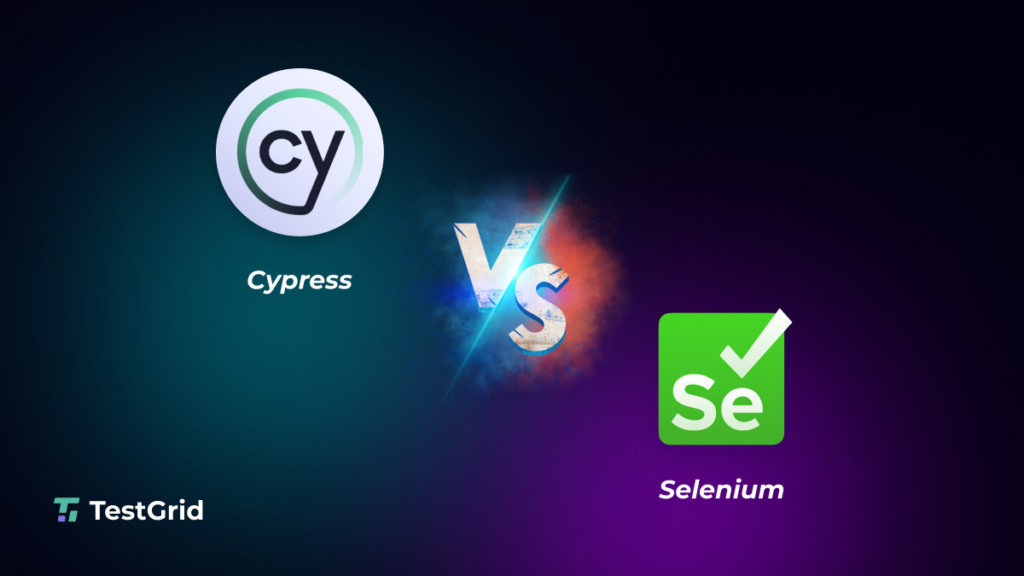Cypress vs. Selenium: Choosing the Best Tool for Web Testing

In the ever-evolving landscape of web development, automated testing tools play a crucial role in ensuring the quality and reliability of applications. Among the plethora of options available, Cypress and Selenium stand out as two of the most prominent frameworks for web testing. But which one is better suited for your needs? In this blog post, we will delve into the strengths and weaknesses of both Cypress and Selenium, helping you make an informed choice for your testing strategy.
Overview of Cypress and Selenium
Selenium has long been regarded as the go-to tool for automated browser testing. It supports multiple programming languages including Java, C#, Ruby, and Python, and has a robust ecosystem that enables users to run tests on various browsers and platforms using the WebDriver protocol. Selenium’s versatility is one of its key features, as it allows testing across different environments, making it popular in enterprise-level applications.
On the other hand, Cypress is a relatively newer tool that has gained significant traction for its modern approach to front-end testing. Built specifically for JavaScript applications, Cypress operates directly inside the browser, providing a more interactive experience and real-time reloading. Its architecture is designed for ease of use, which simplifies the debugging process and enhances the efficiency of writing tests.
Key Features Comparison
– **Setup and Installation**: Cypress stands out for its straightforward installation process. Users can get started quickly with just a few command-line instructions. In contrast, setting up Selenium can be more complex, requiring configuration of WebDriver and other dependencies.
– Ease of Use: Cypress has an intuitive interface and utilizes a syntax that is easier for JavaScript developers. Its dashboard allows users to see tests running in real time, which is extremely beneficial for visual learners. Selenium, while powerful, often requires more boilerplate code and can be less user-friendly, especially for beginners.
– Execution Speed: Cypress tests run in the same run-loop as the application, making them faster and more efficient. This is beneficial when testing dynamic web applications where response times are crucial. Selenium tests, particularly those running on remote WebDriver instances, may experience longer execution times.
– Cross-Browser Testing: Selenium’s ability to run tests on a variety of browsers is a significant advantage, making it ideal for applications that need to ensure compatibility across different environments. Cypress is primarily limited to Chrome-based browsers, although support for Firefox and Electron is available. This limitation might deter teams with a diverse browser requirement.
– Debugging Capabilities: Cypress offers advanced debugging features, allowing developers to debug test failures more effectively. It writes logs, takes screenshots, and records videos of test runs automatically. While Selenium also provides debugging tools, they can be less integrated and require more manual setup.
When to Use Cypress vs. Selenium
Choosing between Cypress and Selenium largely depends on your specific project requirements:
– Choose Cypress if: Your project is focused on modern web applications using JavaScript frameworks like React, Angular, or Vue. If you value speed, ease of setup, and intuitive debugging tools, Cypress can be the perfect match for your needs.
– Choose Selenium if: Your project needs to test across multiple browsers, particularly for legacy applications built on various stacks. If you require a wide range of language support and you’re part of a larger team that’s already familiar with Selenium, it may be the better choice.
Conclusion
In conclusion, both Cypress and Selenium offer unique strengths that can benefit different types of projects. While Cypress shines in speed, simplicity, and modern testing for JavaScript-based applications, Selenium boasts versatility and widespread browser compatibility. Ultimately, the decision should be based on your application’s specific needs, your team’s expertise, and your overall testing strategy. Whichever tool you choose, investing in automated testing is essential for delivering high-quality web applications efficiently.